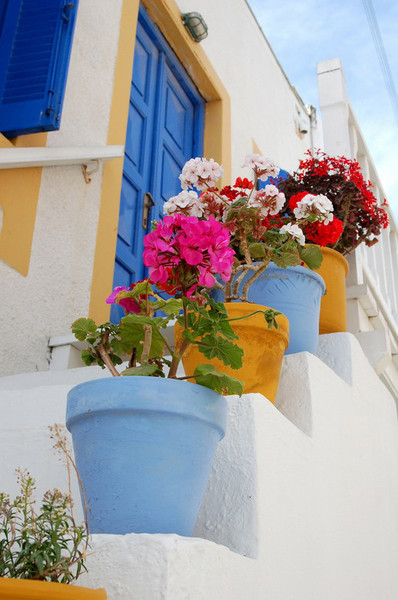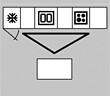Last time we were engaged, now the business came upand up to the old overgrown plants, which need to be updated. Of course, all the methods considered below are also suitable if you want to expand your flower garden without financial expenses or to present someone with a flower copy that you like at home as a gift. Experts advise houseplants in spring and early summer. However, cuttings of fuchsia and geraniums take root better in August-September. So, the methods of reproduction and the plants to which they are applicable.
1. Stem cuttings and leaves
 Reproduction of indoor flowers is the most common way that you can use all year round. It is suitable for most indoor plants.
Reproduction of indoor flowers is the most common way that you can use all year round. It is suitable for most indoor plants.
- choose a strong, healthy, non-flowering shoot (the length of the stem should be at least 7 cm) or a sturdy leaf.
- with its blade or a sharp knife: the stem - below the leaf node, the leaf - strictly across.
- place in the soil.
Cuttings of cactus, as well as large leavessucculents (fatty, cleaning) must be dried for several days before planting, so that they do not rot in the pot. Plants: violet, gloxinia, cacti and other succulents; Begonia, Tradescantia, ivy, balsam easily give roots even in a glass of water. The secrets of success
- Always plant several cuttings at a time and don't be discouraged if some don't take root.
- Almost all cuttings (except cacti, succulents and geraniums) need moist air, so it is better to cover the pot with the cutting with polyethylene.
- The pot should be kept in the shade, avoiding direct sunlight.
- The temperature should not be below +18°C.
2. Layers
 A way for those who have plenty of time left. Choose a strong shoot and press it to the ground in another pot with the help of a bent wire or a hairpin. The layers are rooted quite slowly. Accelerate the process will help the incision made at the bottom of the stem, which will be pressed to the ground. Separate the new plant should be when it is fully rooted and goes into growth. Plants: all kinds of loaches and ampeles with long, flexible stalks.
A way for those who have plenty of time left. Choose a strong shoot and press it to the ground in another pot with the help of a bent wire or a hairpin. The layers are rooted quite slowly. Accelerate the process will help the incision made at the bottom of the stem, which will be pressed to the ground. Separate the new plant should be when it is fully rooted and goes into growth. Plants: all kinds of loaches and ampeles with long, flexible stalks.
3. Offspring
Lateral shoots are usually called offshoots.developed from the main plant. They are cut as close to the parent stem as possible, so that the shoot remains with roots, and planted in a new pot. The bromeliad shoot can be transplanted when it reaches about a quarter of the size of the parent plant. Plants: cacti and other succulents, bromeliads (gusmania, echmea, pineapple, etc.). Bulbous plants (for example, hippeastrum) also form a kind of shoots - these are small baby bulbs. Planted in a separate pot, they usually bloom in 1-2 years.
4. Whiskers
Everything here is like strawberries.If the young plant that has formed on the tendril already has roots, the tendril can be cut immediately; if there are no roots yet, the young plant should be dug in and only after rooting should it be separated from the main flower. Plants: Chlorophytum, Tolmia, Saxifraga scaly-leaved, Kalanchoe Degremona.
5. Bush Division
To separate daughter bushes and rosettes,The plant is completely removed from the ground, the roots are shaken off and the stem is carefully broken at the junction or cut with a knife. Under no circumstances should the plant be torn apart! Plants: violet, sansevieria, cyperus, chlorophytum, maranta, ferns.
6. Air Lines
This method is used for overgrown,plants with long, bare stems that have lost their decorative value. Consider how much you would like to shorten the stem and make a cut in this place, removing the bark on a 1.5 cm section. (Keep in mind that if the length of the layer is more than 60 cm, it is unlikely to take root.) This section of the stem should be covered with sphagnum and wrapped in polyethylene, securing it to the stem with wire in two places - above and below the cut. You will get a kind of hanging pot. In a couple of months, the roots will become visible through the polyethylene. When this happens, you can safely cut off the layer under the lower wire and root the new plant in the ground. Don't rush to throw away the pot with the remaining "stump": with regular watering you will get lateral shoots, which you can then also root. Plants: dracaena, ficus, monstera, dieffenbachia. Entertaining botany For those who are especially keen, there are more intricate methods that give no less impressive results. So, you can root:
- part of the leaf: it is enough to thrust a small triangle, cut from a sheet of royal begonia, or a rectangle from a leaf of sansevieria, to form a new plant.
- piece of stem: the old discarded stalk is cut into "sausages" and "planted" in the ground either horizontally or vertically. It is important that there is at least one knot on each piece of the stem. This method is good for diffenbachia and dracaena.
- seeds: at a temperature of 16-20 ° C you can quite germinate "nettle" -culeus.
- disputes: all fans of ferns can observe at home how under the glass in a pot of spores appear tiny green sprouts-platelets.
In preparing the article, the materials of D.R. Hession "All about houseplants".









